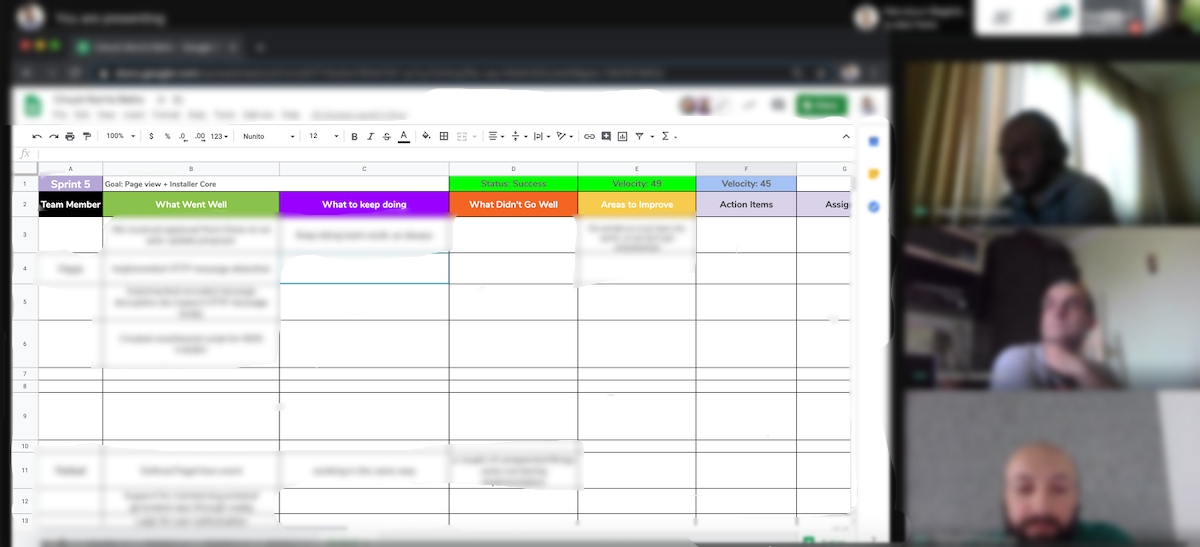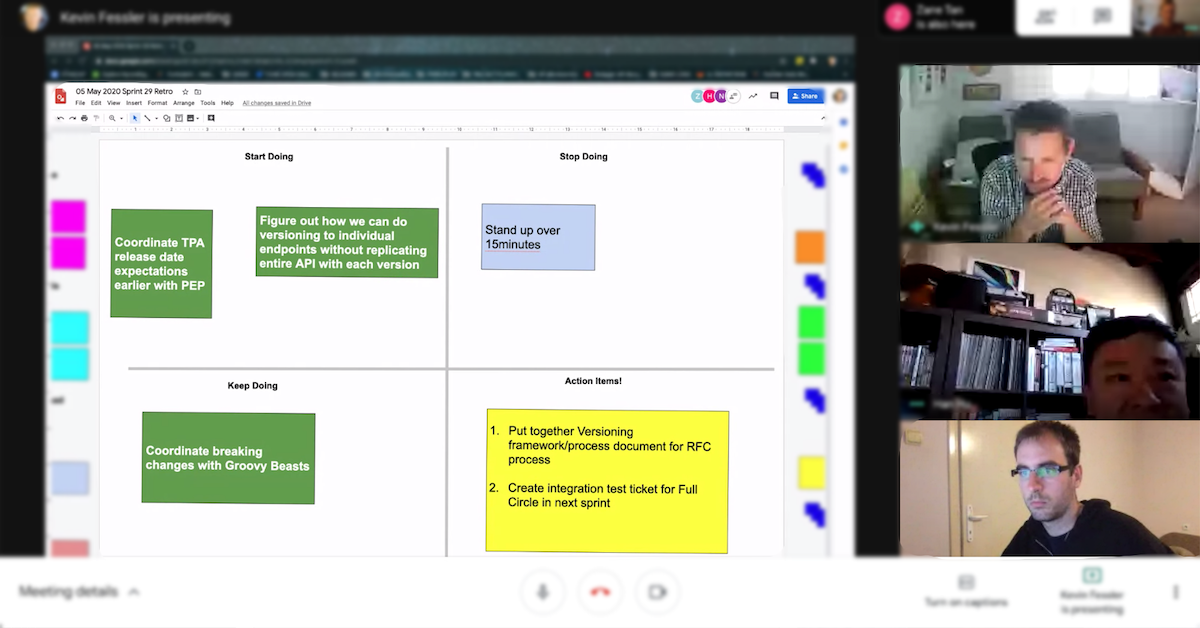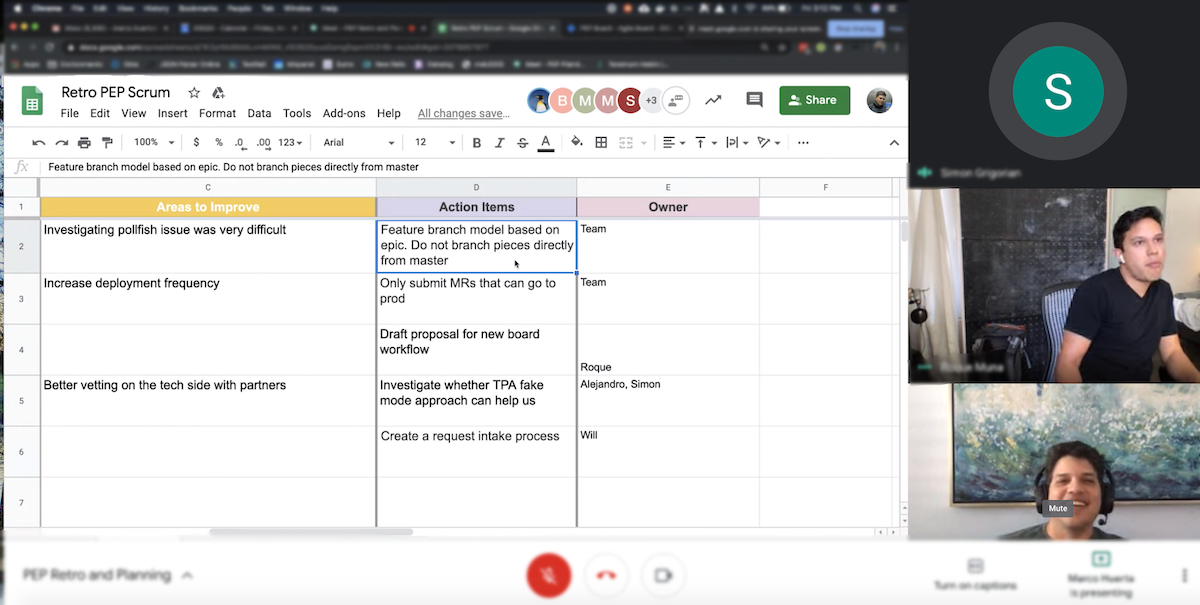DISQOTECH uses retrospectives (retros) as part of our Agile process to enable open communication within our teams and to improve team dynamics. Retros are a check-in meeting held by development teams at the end of each sprint.
Each DISQOTECH team has a different approach, and we’ll be sharing a glimpse of these approaches throughout this article. The building blocks of a successful retro include active participation, transparency, understanding the purpose of the retro, and keeping open discussion.
Retro Participation
Retros require active participation from team members, and although these meetings center a development team, many individuals with different roles make an appearance. Some key roles in attendance are engineers, product managers, and product designers. Who participates all depends on who worked on a given sprint. Since we encourage transparency within DISQOTECH, we welcome anybody interested in attending a specific retro to join in.
Keeping Retro Boards Public
Our teams use Google Docs to take notes on retro boards. This way, we can easily collaborate simultaneously on documents. On par with our measures to increase transparency, these notes are available for anyone else at DISQO.
Public retro boards enable teams to learn from one another, decreasing the necessity to repeat counterproductive patterns and weaknesses in team communication. In the past, we’ve seen teams take up new challenges to increase productivity after being motivated by another team’s sprint performance.

The Chuck Norrisk team uses a retro board with the following sections: What Went Well, What To Keep Doing, What Didn’t Go Well, and Areas to Improve. During the first five minutes of their regular retros, each team member provides comments. After the first five minutes, the whole team works together to fill in the Action Item column.
Why We Use Retros
Retros are an essential pause for reflection that tie in our daily activities with the bigger picture. They shift our focus from the day-to-day task-oriented work we do to conversations about what’s happening on the business and team level.
Without these critical pauses, small and otherwise easily-addressable issues can fester and eventually cause a lot more harm than good. Imagine that you cut yourself while hiking. If you don’t pause to address the cut, disinfect it, and bandage it, the wound can get infected and cause more problems down the road.
Retros give us space to ask how the team is delivering and how we can work better together. Not every retro is going to be utterly profound, but it is a dedicated space for these types of questions to live. On top of being a space to address what needs to be improved, retros also provide room to reflect on team wins - like getting a deliverable out sooner than expected or practicing excellent communication.

The Funkadelic team uses a retro board with the sections: Start Doing, Stop Doing, Keep Doing, and Action Items. During the first five minutes of their retro, each team member adds virtual post-it notes to the first three boxes. After the five minutes is up, they work together to generate action items that go in the Action Items box.
Retro Process
The retro has two primary parts: input from team members, followed by an open discussion and creation of actionable items. Typically, team members spend the first five minutes of the retro writing thoughts on their team’s retro board. So the retro topics are based on ideas from the most recent sprint, or general team performance and communication. Some examples of retro topic categories are as follows.
- What we should start doing
- What we should stop doing
- What we should keep doing
- What went well
- What didn’t go well
- What can be improved

The Purple Electric Penguins team uses a retro board with the sections: What Went Well, What Didn’t Go Well, and Areas to Improve. Each team member adds comments during the first five minutes of the discussion. Then they work together to compose the next steps that go in the Action Item column.
After team members have added their talking points, the retro turns into a discussion of each item on the board. Typically, the team’s product or engineering manager acts as a facilitator and reads through the comments in each section aloud. This facilitator helps to dig deeper on each point by restating the original comment and asking for clarification.
From the retro discussion, teams can refine each individual’s input and formulate actionable items—these action items as something for the team to work on during their upcoming sprint.
Fostering Productive Retro Discussions
Effective retros work best when team members trust one another. With trust, team members believe that voicing their thoughts will be met with respectful listening. Retros meant to open up discussion in a non-personal and non-threatening way. It’s vital to have a good team rapport so that the entire team feels empowered.
Retros are a regular pulse that alerts us to our development teams’ health - both on the delivery side and the people side. The rewards of holding retros are significant, and worth the time it takes to get everyone together after each sprint.